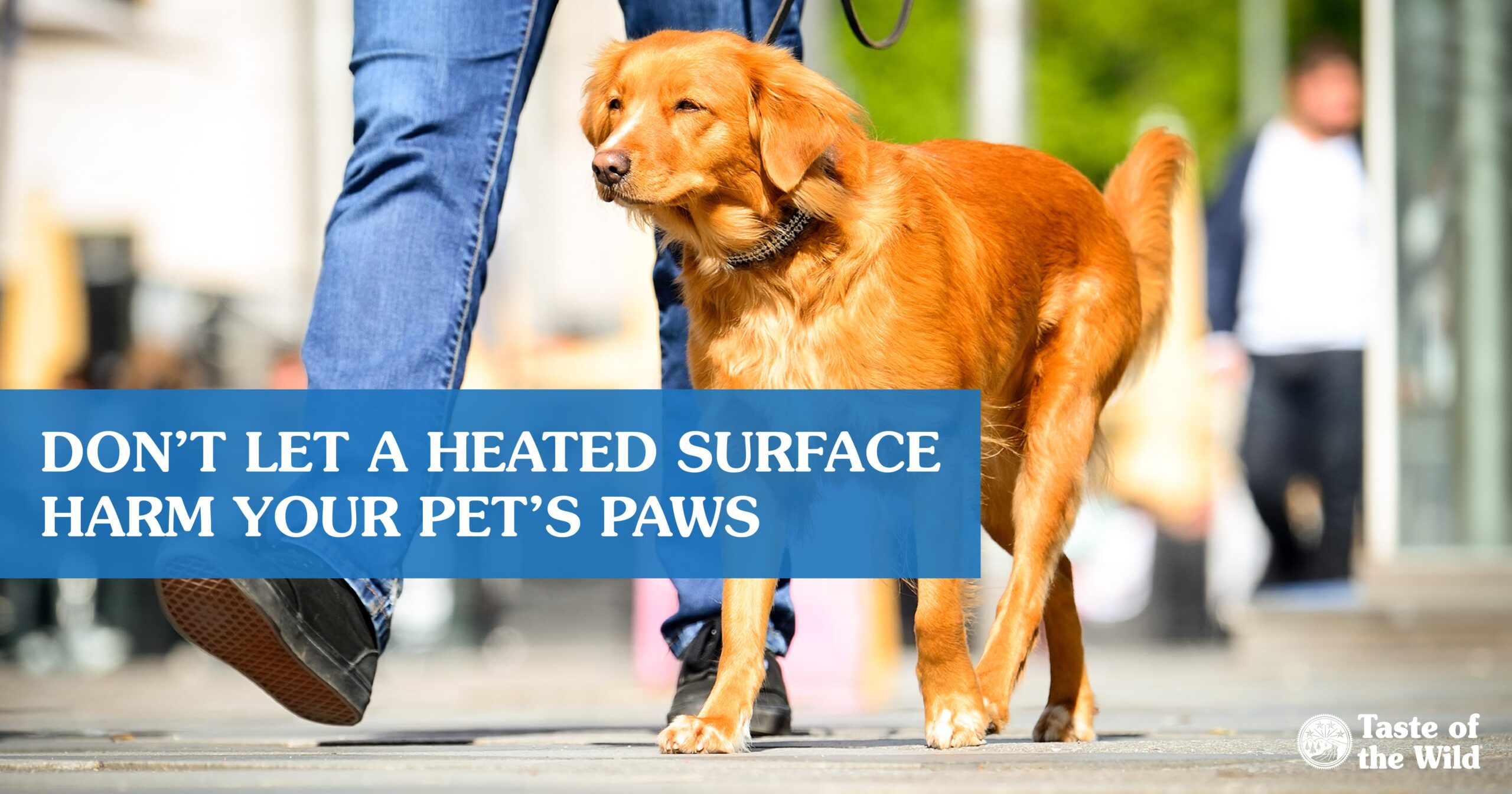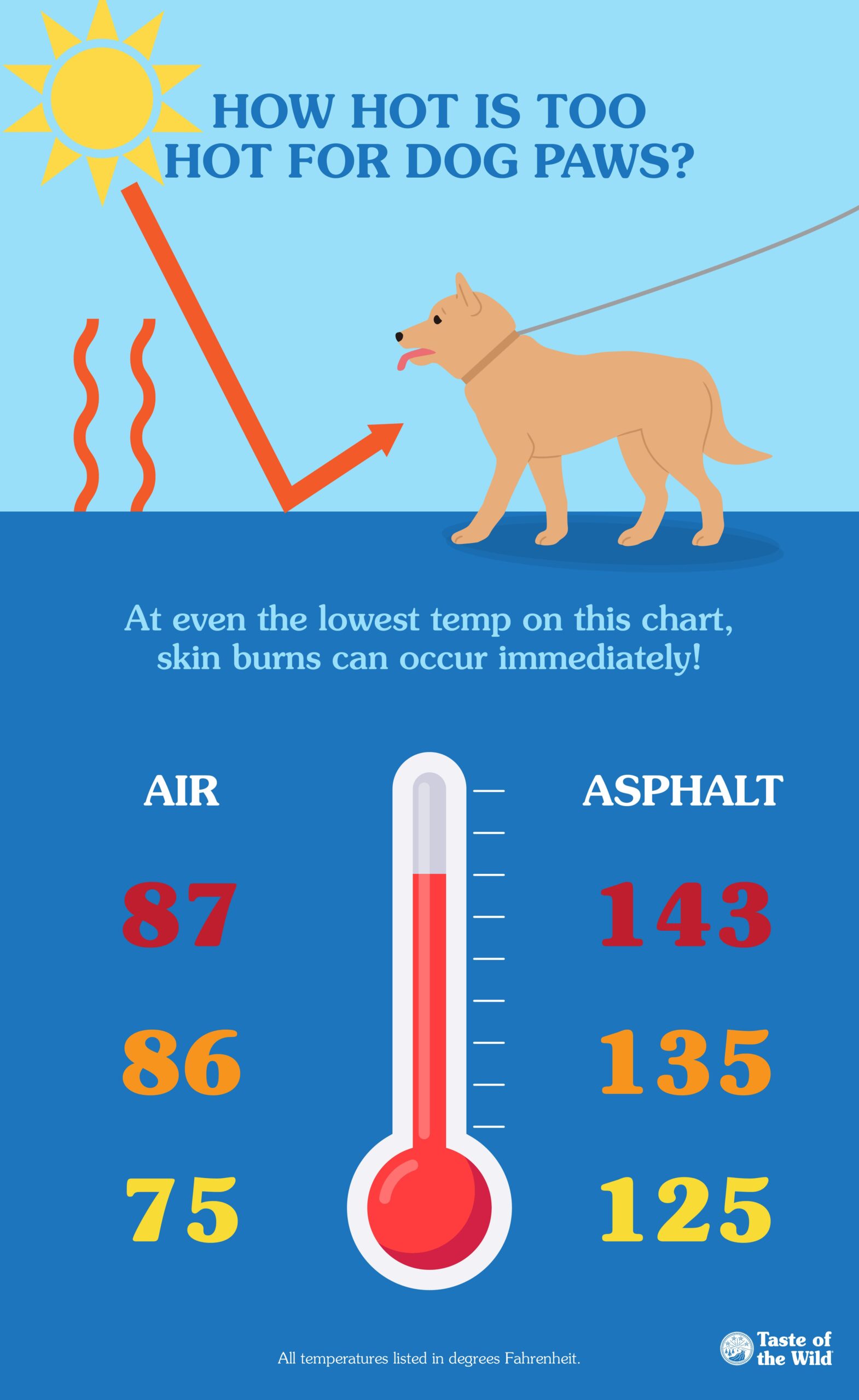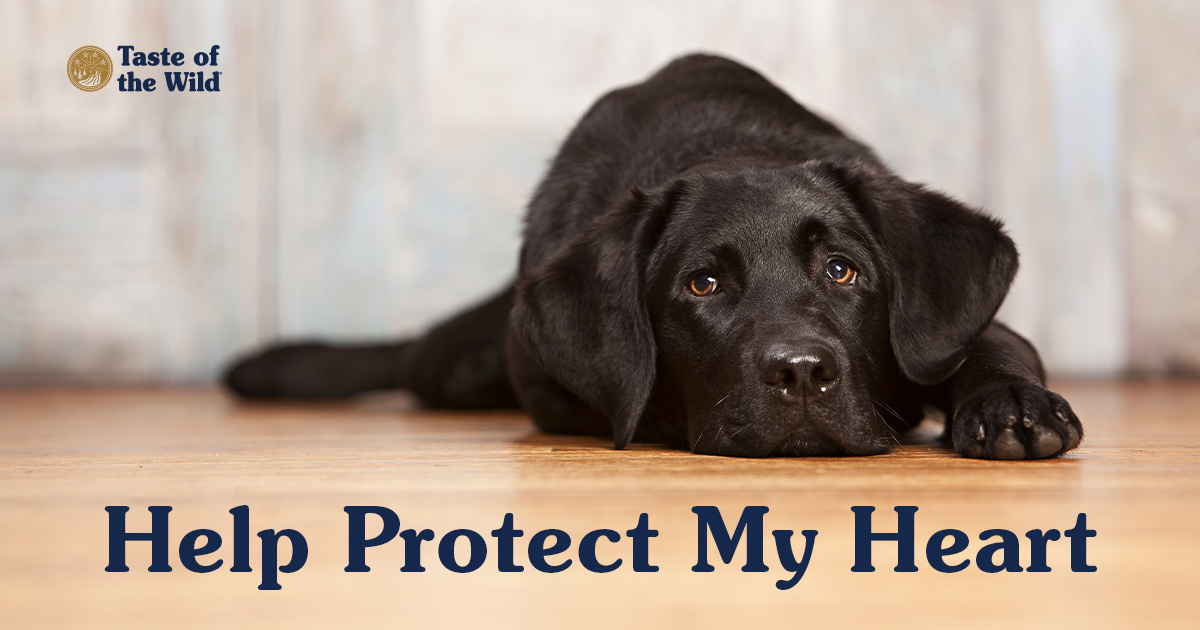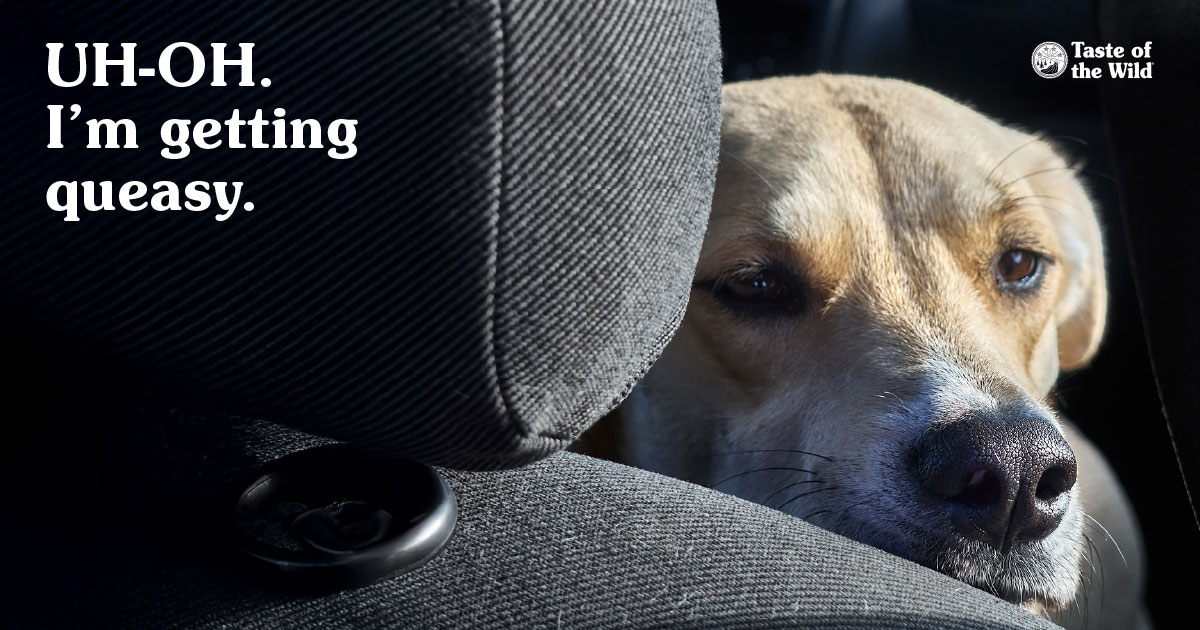How to Protect Dog Paws from Hot Pavement
Thursday, July 20, 2023 | Health

A stroll through the neighborhood on a sunny summer day is great for you and your dog. But when temperatures heat up above 75 degrees Fahrenheit, that hot pavement could burn your dog’s paws. As a pet parent, you want to make the right choices to keep your dog safe, so here’s how to tell if it’s too hot for a walkie, and how to protect those dog paws when the temps rise.
How Hot Is Too Hot for Dog Paws?
When the temperatures outside are scalding, it’s important to check how hot the pavement is before letting your dog walk on a paved surface. Place your hand on the surface your dog will be walking on. If you cannot comfortably hold your hand in the same place for ten seconds, the pavement or artificial turf is too hot for your pet to stroll on. Try one of the following best practices to keep your pet’s paws safe from that summer heat. A hot surface can cause discomfort, blisters and burns.

Adjust Your Schedule for Dog Walks
Obviously, as the day gets hotter, so do potential walking surfaces. The hottest time of day during the summer is between 3 p.m. and 6 p.m., while the coolest daylight hours are right around sunrise and after 6 p.m. as the sun is starting to go down. Early morning and evening strolls can help you and your doggo beat that summer heat!
Go with Grass
Asphalt, sidewalks and artificial turf have higher solar reflectance than natural grass. Therefore, more heat is reflected on these surfaces and remains hotter than grass. Instead of trotting out on a sidewalk for your lunchtime stroll, check the temperature of the grass in your backyard or a local park. As a best practice, go ahead and place your hand on the grass for ten seconds to check the temperature compared to the sidewalk. You’ll notice grass remains a cooler alternative for your pet. But always check, just to be sure!
Protective Possibilities for Pooch Paws
The most stylish way to help your pet walk on warmer surfaces is to invest in some dog booties. You can pick up booties at your local pet store or online. Just like with leash training, you’ll need to factor in time for your dog to get acclimated to the booties before taking them out and about. Remember to help your pet get used to new petware at a pace they are comfortable with and use pawsitive reinforcement to let them know what a great job they are doing!
Getting acclimated to dog booties is a quicker process for some pets compared to others. If your dog doesn’t want any part of wearing booties, though, that’s OK, too. Some dogs prefer to be bootie free.
Damaged Paws
How do you know if your pet’s paws received damage from a prior walk? Your dog will exhibit the following symptoms:
- Limping
- Excessive licking or chewing their paws
- Paw pads appear darker than normal
- Blisters or redness
- Paw pads look visibly damaged
We recommend visiting your local vet as soon as possible if you notice paw-pad damage. Burns and blisters can easily become infected if not treated properly.
In addition to keeping your pet’s paws safe during the summer, pack ice packs and cold water to help cool your doggo down on your walk if needed. And lastly, watch for signs that your pet is getting too hot — so you know when it’s time to go back indoors. Warning signs include excessive panting, extreme salivation, anxiety and labored breathing.
RELATED POST: Don’t Let the Sun Ruin Summer Fun
The information in this blog has been developed with our veterinarian and is designed to help educate pet parents. If you have questions or concerns about your pet’s health or nutrition, please talk with your veterinarian.




